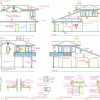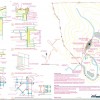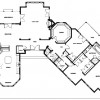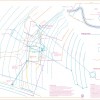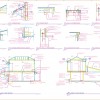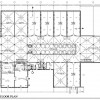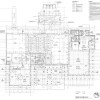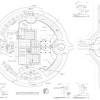
Eugene Silva is an architect in Edmonton, Alberta, Canada. (780) 901-5359 [email protected] www.e3architecture.com
I have been practicing architecture since 1984. During this time I have sought to enhance the built environment through the practical application of “good architecture” and by listening to my clients needs and wishes. Each project is approached as a unique problem with a unique set of issues and requirements rather than the application of an architectural “style” or current trend. The growth of my practice is based upon an ever-increasing list of clients pleased with my sincere concern, quality design, and competent personal service. Most of my projects have been small scale including both residential and commercial. Then later I worked on several wineries in Sonoma County, California.
I started using a computer in my business in 1988 when I bought my Mac II. At the time, my choices were DOS or Mac and as an architect, not a computer junky, I did not want to have to memorize a lot of obscure commands and operational sequences in order to use my computer. I have never regretted my choice. At first, I used my Mac for word processing and business management functions. I also began to research different CAD programs for the time when I would abandon the old drafting table. Many of my consultants and peers had begun using AutoCAD and each time I would watch someone using the program I always thought, “there has to be a better way.” I tried several different Mac-based programs, but it was not until I saw PowerDraw demonstrated at the Macworld Expo in San Francisco in 1994 that I felt that I had found one that provided me with the ease of use, and elegant simplicity that I had been looking for. I wanted a program that would allow me to produce drawings in a manner that I was familiar with. After beginning to use PowerDraw, I found that not only could I produce the same high quality of drawings I had done by hand but that I could do them faster, and they were a lot more accurate. Along with PowerDraw, I purchased the Advanced Drafting Tools that Alfred Scott wrote. I found them to be an invaluable addition to the program.
Since then, PowerDraw has become PowerCADD, Advanced Drafting Tools have become WildTools, and together they continue to improve the speed, ease of use, and functionality of the drawing experience. One of the best aspects of WildTools is that with them, you get Alfred Scott, a wild crazy guy who just loves to solve programming problems. I have been able to suggest numerous modifications and additions to WildTools that are not only listened to but also implemented in future releases of WildTools. Try to get that from AutoCAD.
PowerCADD and WildTools have allowed me to take my practice home (I no longer need an office with lots of desk space); has allowed me the ability to produce all of my drafting myself (I no longer need to hire employees) and makes my practice a lot more fun. I would and do recommend PowerCADD and WildTools to anyone who wants a no-nonsense drafting tool.
Eugene Silva
Architecture
The architect has the unique opportunity through his designs to give more than just a utilitarian meaning to people’s lives. Through the manipulation of materials he may create spaces, introduce surprise, create vistas, and most importantly bring the material world into harmony with human life. The natural and built environments together provides the framework for man’s activities and experiences. This framework may either enhance or detract from our lives.
This is what architecture is all about. The way the environment is put together is potentially one of our most exciting and widespread pleasure sources. Just as a painter mixes his pigments to create a painting and a writer joins works to make a coherent statement, the architect joins materials together in such a way that the combination is much more meaningful than the sum of the individual parts, and by so doing, he may add more meaning to peoples lives.
Good architecture is about discovery, seeking to know:
the environment: where it is; the context, the nature, the land,
the inhabitant: the wants and needs of who is in it,
the function: how it all needs to work,
the image: how it shall be perceived,
the structure: how it stands,
the economics: the budget, costs, feasibility, and maintenance.
Good architecture is about experience.
It is concerned with sequence: how one moves through its spaces.
It provides contrast and harmony: through variety and simplicity.
It creates a sense of “place”: which invites activity and facilitates activities.
Just outside the village of Assisi, Italy, there is a small mountain hermitage built by the followers of St. Francis. The stones and earthen tile roof caress the earth with a sense of assurance and respect. It does not dominate the environment, but then nor does the environment dominate the hermitage. There is total harmony. The earth is its brother. In the center of the small complex of buildings is a small terrace which is open to the sunlight and a view of the valley below. One feels at peace there. Life is a joy, not a struggle. The whole place shakes hands with you and all of the trivia regarding who did it and why becomes unimportant. We know who did it, it was someone with a twinkle in his eye.
Eugene Silva
